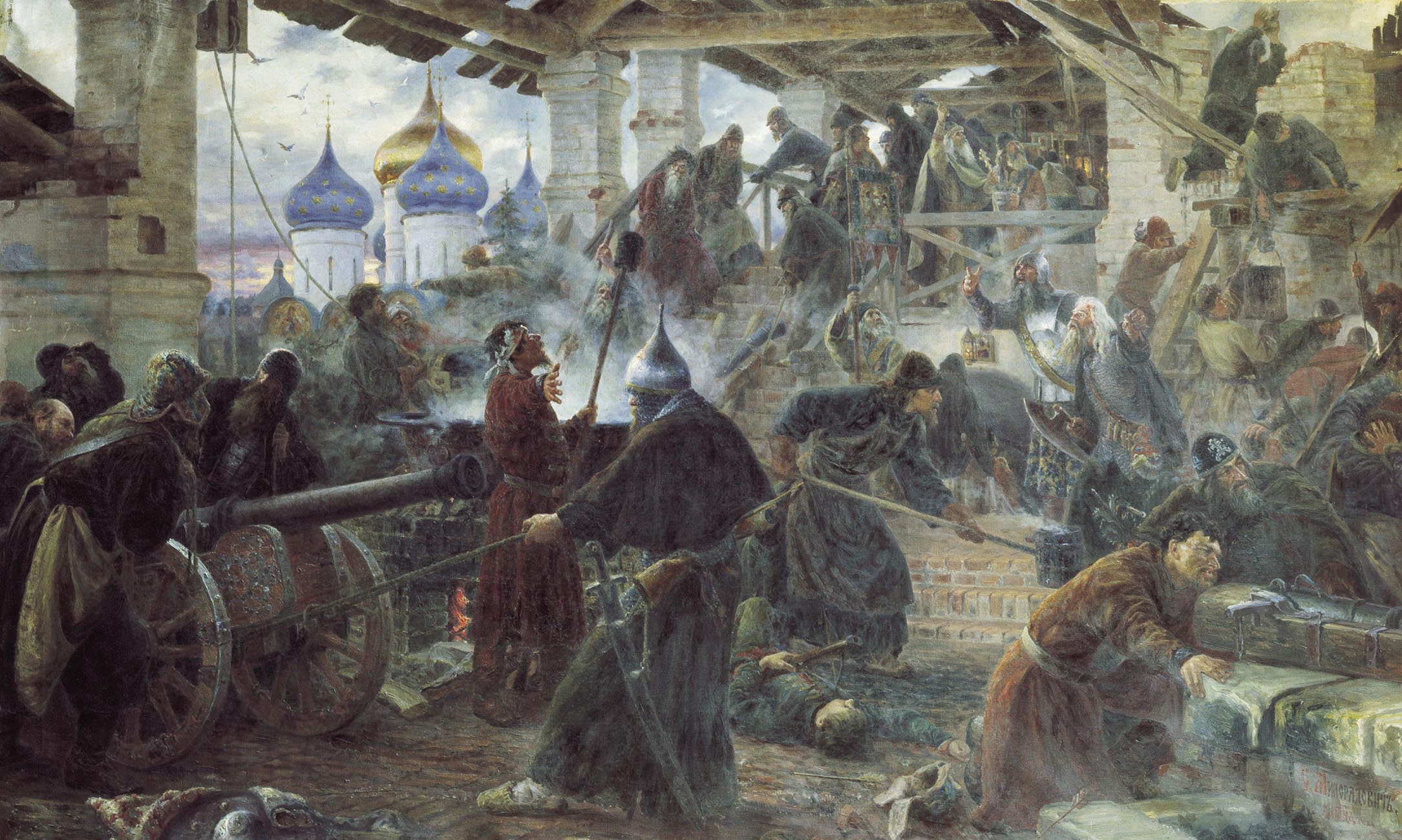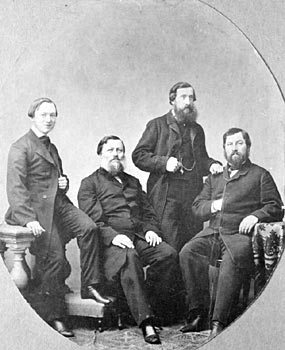|
Belokrinitskaya Hierarchy
{{Unreferenced, date=November 2021 Belokrinitskaya Hierarchy (russian: Белокриницкая иерархия) is the first full and stable church hierarchy created by the Old Believers. The Orthodox Old-Rite Church (in earlier times called the Lipovan Orthodox Old-Rite Church with jurisdiction all over the world) and Russian Orthodox Old-Rite Church constitute this hierarchy. The First Hierarch of the Belokrinitskaja Hierarchy Orthodox Old-Rite Church nominally has the seat of his ecclesiastical see in Bila Krynytsya, a small village that lies in southwest Ukraine, just north of the border with Romania. In practice, the current incumbent, Bishop Leonty, discharges his duties from Brăila, a city on the lower Danube. History The hierarchy was created in 1846 by acceptance of the Greek Metropolitan Ambrose. The hierarchy is called after the name of the see of the First Hierarch Belaya Krinitsa, Bukovina, in Austria-Hungary (currently Chernivtsi Oblast, Ukraine). Major spo ... [...More Info...] [...Related Items...] OR: [Wikipedia] [Google] [Baidu] |
Old Believers
Old Believers or Old Ritualists, ''starovery'' or ''staroobryadtsy'' are Eastern Orthodox Christians who maintain the liturgical and ritual practices of the Russian Orthodox Church as they were before the reforms of Patriarch Nikon of Moscow between 1652 and 1666. Resisting the accommodation of Russian piety to the contemporary forms of Greek Orthodox worship, these Christians were anathematized, together with their ritual, in a Synod of 1666–67, producing a division in Eastern Europe between the Old Believers and those who followed the state church in its condemnation of the Old Rite. Russian speakers refer to the schism itself as ''raskol'' (), etymologically indicating a "cleaving-apart". Introduction In 1652, Patriarch Nikon (1605–1681; patriarch of the Russian Orthodox Church from 1652 to 1658) introduced a number of ritual and textual revisions with the aim of achieving uniformity between the practices of the Russian and Greek Orthodox churches. Nikon, having notice ... [...More Info...] [...Related Items...] OR: [Wikipedia] [Google] [Baidu] |
Ambrose Of Belaya Krinitsa
Metropolitan Ambrose (born Amoirеas Papageorgopolos, el, Αμοιρέας Παπαγεωργόπουλος, Andrey Popovich, russian: Андрей Попович; 1791–1863) was the first Old Believers' Metropolitan of the Ancient Orthodox Church also known later as Russian Orthodox Old-Rite Church. Early life He was born in 1791 in village Maistros, Ottoman Empire (now Yenice, Enez District, Edirne Province, Turkey), at that time part of the Ottoman Empire. He was of Greek origin. In 1811, he married, and shortly after was ordained as a priest by metropolitan Matthew (Megalos) of Enos. In 1814 he lost his wife, who had given birth to a son, named George after his grandfather. In 1817 he was elected Igumen (abbot) of the Monastery of the Holy Trinity on the island of Halki. Patriarch Constantine had him Patriarch_Gregory_VI,_assisted_by_four_other_bishops._He_remained_in_his_position_for_five_years_before_being_removed_by_the_ locum_tenens_of_the_patriarchal_Greek_Chu ... [...More Info...] [...Related Items...] OR: [Wikipedia] [Google] [Baidu] |
Old Believer Movement
Old or OLD may refer to: Places *Old, Baranya, Hungary *Old, Northamptonshire, England *Old Street station, a railway and tube station in London (station code OLD) *OLD, IATA code for Old Town Municipal Airport and Seaplane Base, Old Town, Maine, United States People *Old (surname) Music *OLD (band), a grindcore/industrial metal group * ''Old'' (Danny Brown album), a 2013 album by Danny Brown * ''Old'' (Starflyer 59 album), a 2003 album by Starflyer 59 * "Old" (song), a 1995 song by Machine Head *''Old LP'', a 2019 album by That Dog Other uses * ''Old'' (film), a 2021 American thriller film *''Oxford Latin Dictionary'' *Online dating *Over-Locknut Distance (or Dimension), a measurement of a bicycle wheel and frame *Old age See also *List of people known as the Old * * *Olde, a list of people with the surname *Olds (other) Olds may refer to: People * The olds, a jocular and irreverent online nickname for older adults * Bert Olds (1891–1953), Australian rules ... [...More Info...] [...Related Items...] OR: [Wikipedia] [Google] [Baidu] |
Beglopopovtsy
Beglopopovtsy ( rus, беглопоповцы, p=bʲɪɡləpɐˈpoft͡sɨ, "followers of runaway priests") was one of the denominations among the Popovtsy, who belonged to the Old Believers. Since none of the bishops joined the Old Believers movement after the schism of 1666-67 in the Russian Orthodox Church, except bishop Paul of Kolomna, who was executed, ordained priests of the old rite would have soon become extinct. Two responses appeared to this dilemma: the “priestist” Old Believers (поповцы (Popovtsy)) and the non-priestist Old Believers (беспоповцы ( Bespopovtsy)). The Beglopopovtsy movement formed in the late 17th century and included priests, who had "deserted" the Russian Orthodox Church (hence, the name "beglopopovtsy", meaning "with deserted priests"). They settled in the Nizhny Novgorod region beyond the Volga River (along the Kerzhenets and Belbash Rivers), around Starodub, Chernigov (modern ''Chernihiv'', Ukraine), and on the Vetka Island ( ... [...More Info...] [...Related Items...] OR: [Wikipedia] [Google] [Baidu] |
Rogozhskoe Cemetery
Rogozhskoe cemetery ( rus, Рогожское кладбище, p=rɐˈɡoʂskəjɪ ˈkladbʲɪɕːɪ) in Moscow, Russia, is the spiritual and administrative center of the largest Old Believers denomination, called the Russian Orthodox Old-Rite Church. Historically, the name ''cemetery'' was applied to the whole Old Believer community, with living quarters, cathedral, almshouses, libraries, archives and the Old-Rite Institute (established in 1907). Actual 12 hectare cemetery is now a non-denominational municipal burial site; the Old Believers operate a closed spiritual community in the southern part of the historical Rogozhsky township, while Russian Orthodox church operates church of Saint Nicholas, located between the cemetery and Old Believer territory. History In 1762, the first year of her reign, Catherine II of Russia opened Russia to settlers of all confessions, excluding Jews, in particular inviting the Old Believer fugitives, whose spiritual center at that time was based ... [...More Info...] [...Related Items...] OR: [Wikipedia] [Google] [Baidu] |
Russian Orthodox Church
, native_name_lang = ru , image = Moscow July 2011-7a.jpg , imagewidth = , alt = , caption = Cathedral of Christ the Saviour in Moscow, Russia , abbreviation = ROC , type = , main_classification = Eastern Orthodox , orientation = Russian Orthodoxy , scripture = Elizabeth Bible ( Church Slavonic) Synodal Bible (Russian) , theology = Eastern Orthodox theology , polity = Episcopal , governance = Holy Synod of the Russian Orthodox Church , structure = Communion , leader_title = , leader_name = , leader_title1 = Primate , leader_name1 = Patriarch Kirill of Moscow , leader_title2 = , leader_name2 = , leader_title3 = Bishops , leader_name3 = 382 (2019) , fellowships_type = Clergy , fellowships = 40,514 full-time clerics, including 35,677 presbyters and 4,837 de ... [...More Info...] [...Related Items...] OR: [Wikipedia] [Google] [Baidu] |
Morozovy
The Morozovs (russian: Морозовы) is a famous Old Believers Russian family of merchants and entrepreneurs. The family name Morozov originates from a Russian word ''moroz'' (мороз) that means ''frost''. The founder of the family was Savva Vasilyevich Morozov (1770–1862). He had five sons and a daughter, Varvara Savvichna Morozova. The merchant family of Morozovs should not be confused with another famous Old Believer: boyarynya Feodosiya Morozova (and her family). The latter were boyars, whereas almost all the other famous Morozovs were merchants, and also descendants of peasants. Five sons Savva Vasilyevich's sons were all involved in his business: * Elisei Savvich Morozov (1798-1868) * Zhakar Savvich Morozov (1802–1857) * Abram Savvich Morozov (1806–1856) * Ivan Savvich Morozov (1810–1864) * Timofei Savvich Morozov (1823–1889) The four branches The family business was divided into four in 1871. * Zakharovichi: Ivan Zakharovich Morozov, (Bogorodsk-Glukho ... [...More Info...] [...Related Items...] OR: [Wikipedia] [Google] [Baidu] |
Chernivtsi Oblast
Chernivtsi Oblast ( uk, Черніве́цька о́бласть, Chernivetska oblast), also referred to as Chernivechchyna ( uk, Чернівеччина) is an oblast (province) in Western Ukraine, consisting of the northern parts of the regions of Bukovina and Bessarabia. It has an international border with Romania and Moldova. The oblast is the smallest in Ukraine by area and second smallest by population. Chernivtsi was part of Romania. In 1408, when it was a town in Moldavia and the chief centre of the area known as Bukovina. Chernivtsi later passed to the Turks and then in 1774 to Austria. After World War I it was ceded to Romania, and in 1940 the town was acquired by the Ukrainian SSR. The oblast has a large variety of landforms: the Carpathian Mountains and picturesque hills at the foot of the mountains gradually change to a broad partly forested plain situated between the Dniester and Prut rivers. It has a population of 896,566 as of 2020, and its capital is the city ... [...More Info...] [...Related Items...] OR: [Wikipedia] [Google] [Baidu] |
Austria-Hungary
Austria-Hungary, often referred to as the Austro-Hungarian Empire,, the Dual Monarchy, or Austria, was a constitutional monarchy and great power in Central Europe between 1867 and 1918. It was formed with the Austro-Hungarian Compromise of 1867 in the aftermath of the Austro-Prussian War and was dissolved shortly after its defeat in the First World War. Austria-Hungary was ruled by the House of Habsburg and constituted the last phase in the constitutional evolution of the Habsburg monarchy. It was a multinational state and one of Europe's major powers at the time. Austria-Hungary was geographically the second-largest country in Europe after the Russian Empire, at and the third-most populous (after Russia and the German Empire). The Empire built up the fourth-largest machine building industry in the world, after the United States, Germany and the United Kingdom. Austria-Hungary also became the world's third-largest manufacturer and exporter of electric home appliances, ... [...More Info...] [...Related Items...] OR: [Wikipedia] [Google] [Baidu] |
Bukovina
Bukovinagerman: Bukowina or ; hu, Bukovina; pl, Bukowina; ro, Bucovina; uk, Буковина, ; see also other languages. is a historical region, variously described as part of either Central or Eastern Europe (or both).Klaus Peter BergerThe Creeping Codification of the New Lex Mercatoria Kluwer Law International, 2010, p. 132 The region is located on the northern slopes of the central Eastern Carpathians and the adjoining plains, today divided between Romania and Ukraine. Settled initially and primarily by Romanians and subsequently by Ruthenians (Ukrainians) during the 4th century, it became part of the Kievan Rus' in the 10th century and then the Principality of Moldavia during the 14th century. The region has been sparsely populated since the Paleolithic, with several now extinct peoples inhabiting it. Consequently, the culture of the Kievan Rus' spread in the region, with the Bukovinian Church administered from Kyiv until 1302, when it passed to Halych metropoly. The ... [...More Info...] [...Related Items...] OR: [Wikipedia] [Google] [Baidu] |
Metropolitan Bishop
In Christian churches with episcopal polity, the rank of metropolitan bishop, or simply metropolitan (alternative obsolete form: metropolite), pertains to the diocesan bishop or archbishop of a metropolis. Originally, the term referred to the bishop of the chief city of a historical Roman province, whose authority in relation to the other bishops of the province was recognized by the First Council of Nicaea (AD 325). The bishop of the provincial capital, the metropolitan, enjoyed certain rights over other bishops in the province, later called " suffragan bishops". The term ''metropolitan'' may refer in a similar sense to the bishop of the chief episcopal see (the "metropolitan see") of an ecclesiastical province. The head of such a metropolitan see has the rank of archbishop and is therefore called the metropolitan archbishop of the ecclesiastical province. Metropolitan (arch)bishops preside over synods of the bishops of their ecclesiastical province, and canon law and traditio ... [...More Info...] [...Related Items...] OR: [Wikipedia] [Google] [Baidu] |


